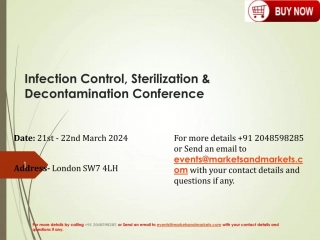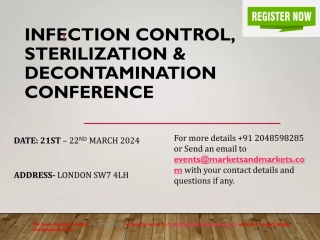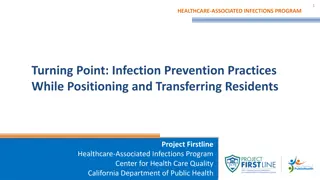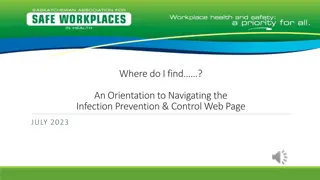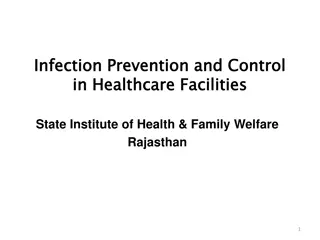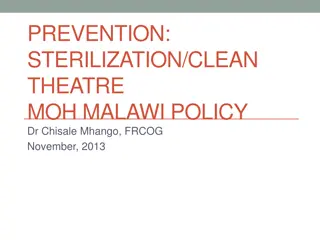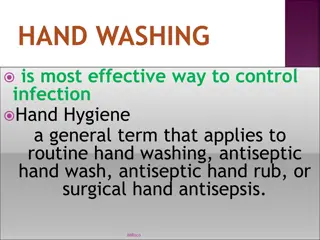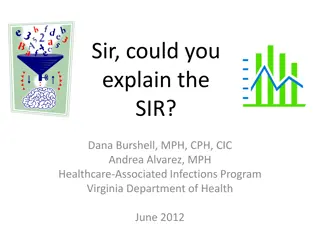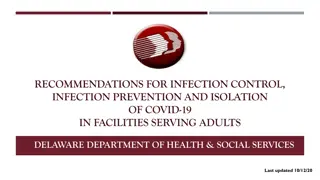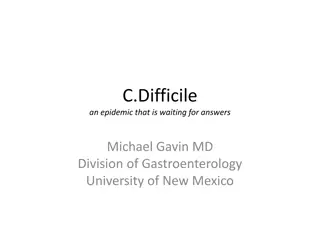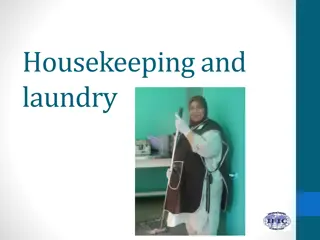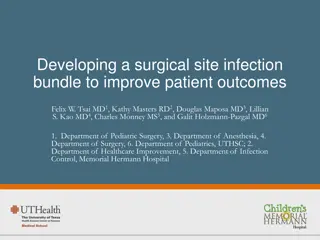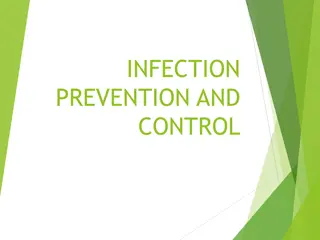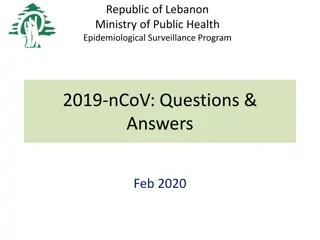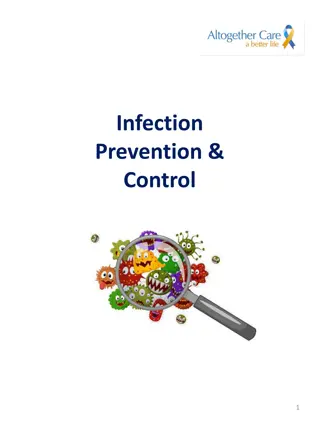Advancements in Infection Control Practices
Delve into the evolution of infection control protocols, from Universal Precautions to Enhanced Barrier Precautions, as discussed at the 2023 APIC meeting. Explore the impact of practice changes on infection prevention and control through insightful presentations and data review.
Download Presentation

Please find below an Image/Link to download the presentation.
The content on the website is provided AS IS for your information and personal use only. It may not be sold, licensed, or shared on other websites without obtaining consent from the author.If you encounter any issues during the download, it is possible that the publisher has removed the file from their server.
You are allowed to download the files provided on this website for personal or commercial use, subject to the condition that they are used lawfully. All files are the property of their respective owners.
The content on the website is provided AS IS for your information and personal use only. It may not be sold, licensed, or shared on other websites without obtaining consent from the author.
E N D
Presentation Transcript
Darlene Morse MSN RN, M.Ed., CIC December 1, 2023 APIC New England Changing Terminology in Infection Control 1
Objectives Discuss the presentations at the 2023 APIC meeting Discuss when it is appropriate to use Enhanced Barrier Precautions (EBP) Explain how the latest practice changes impact infection prevention and control
Activities at the 2023 APIC Conference Personal Brand Bar-Photo taken, learned to organize emails and to update our Linkedin page. So many presentations to attend: How State and Local Health Departments can Partner with APIC for IP Workforce Needs IP s in the know, The latest Practice changes in Infection Prevention and Control Carbapenem-resistant Acinetobacter Baumannii Outbreak in a Burn unit Promoting Chapter Excellence with the APIC Research toolkit Investigation and Response to a Case of Paralytic Polio in New York Success Stories of MDRO/C. Auris containment and Prevention Peer-reviewed publication: Why not me? And many more .
Enhanced Barrier Precautions Presented by: Bola Ogundimu, DrPH, RN, CIC, CPHQ Heather Jones, DNP, FNP-C
Historical Terminology Universal Precautions-Recommendations published by the CDC initially in 1985. There were several areas in that document which covered the do s and don ts of universal precautions and was meant to offer protection from HIV. The term Standard precautions was introduced in 1996. At the same time the guidelines around three transmission based precautions were introduced: airborne, droplet and contact. These transmission based precautions were to be used along with standard precautions. In 2019 CDC introduced Enhanced barrier precautions to HICPAC for input related to the care of Nursing home residents with considerations regarding implementation or scope
Review of the Data Pineles et al. AJIC 2017 and Bianco et al. ICHE 2018. Spreading of Germs During High-Contact Resident Care Activities (Spread of two different organisms to gowns and gloves) Roghmann et al., 2015. MRSA Spread to Gowns of Healthcare Wrokers during Care of MRSA-Colonized* Residents by Type of Care Provided and Presence of Chronic Skin Breakdown (*germ found on the body but no symptoms) Lydecker et al., 2021. Targeted Gown and Glove Use to Prevent Staphylococcus aureus in Community-Based Nursing Homes: A Pilot Study Mody et al., 2015. A Targeted Infection Prevention Intervention in Nursing Home Residents with Indwelling Devises
What they Found Clearly organisms were spread on gloves and gowns during high contact resident care Spread was higher for all activities in the presence of areas of chronic skin breakdown This could be a novel evidence based process to prevent the spread of germs within a facility Prevention interventions within a facility showed reduced colonization and infection for patients with indwelling devices
Enhanced Barrier Precautions (EBP) Targeted gown and glove use in high-risk individuals to reduce the spread of MDRO s Gowns and gloves used during high-contact resident care activities Used with Standard Precautions and good infection prevention and control practices Expands personal protective equipment use (PPE) beyond situations where blood or body fluid exposure is anticipated
MDROs Targeted by the CDC but not limited to the following: Pan-resistant organisms Carbapenemase-producing carbapenem- resistant Enterobacterales Carbapenemase-producing carbapenem- resistant Pseudomonas spp. Carbapenemase-producing carbapenem- resistant Acinetobacter baumannii Candida auris Methicillin-resistant Staphylococcus aureus (MRSA) ESBL-producing Enterobacterales Vancomycin-resistant Enterococci (VRE) Multidrug-resistant Pseudomonas aeruginosa Drug-resistant Streptococcus pneumoniae https://www.cdc.gov/hai/containment/PPE-Nursing-Homes.html
When are EBPs indicated? When Contact Precautions do not apply For Nursing home residents who have a wound (such as a chronic wound) or an indwelling medical device, regardless of MDRO colonization status Infection or Colonization with an MDRO EBP s should be continued for the duration of the stay
References Aliyu, S., McGowan, K., Hussain, D., Kanawati, L., Ruiz, M. &Yohannes, S. (2022). Prevalence and Outcomes of Multi-Drug Resistant Blood Stream Infections Among Nursing Home Residents Admitted to an Acute Care Hospital. Journal of Intensive Care Medicine, 37(4), 565-571. doi:10.1177/08850666211014450 Blanco, N., Johnson, J.K., Sorkin, J.D., Lydecker, A.D., Levy, L., Mody, L. & Roghmann, M-C. (2018). Transmission of resistant gram-negative bacteria to healthcare personnel gowns and gloves during care of residents in community-based nursing facilities. Infection Control & Hospital Epidemiology, 39(12), 1425-1430. doi: 10.1017/ice.2018.247 Cassone, M. & Mody, L. (2015). Colonization with multi-drug resistant organisms in nursing homes: Scope, importance, and management. Current Geriatrics Reports, 4(1), 87-95. https://doi.org/10.1007/s13670-0150120-2 Lydecker, A.D., Osei, P.A., Pineles, L., Johnson, J.K., Meisel, J., Stine, O.C., Magder, L., Gurses, A.P., Hebden, J., Oruc, C., Mody, L., Jacobs, Slifka, K., Stone, N.D. & Roghmann, M-C. Targeted gown and glove use to prevent Staphylococcus aureus acquisition in community-based nursing homes: A pilot study. Infection Control & Hospital Epidemiology, 42(4), 448-454. doi: 10.1017/ice.2020.1219
References (Cont) Mody, L., Maheshwari, S., Galecki, A., Kauffman, C.A. & Bradley, S.F. (2007). Indwelling device use and antibiotic resistance in nursing homes: Identifying a high-risk group. Journal of the American Geriatrics Society, 55(12), 1921-1926. https://doi.org/10.1111/j.1532-5415.2007.01468.x Mody, L., Krein, S.L., Saint, S., Min, L.C., Montoya, A., Lansing, B., McNamara, S., Symons, K.,Fisch, J., Koo, E., Rye, R.A., Galecki, A., Kabeto, M. U., Fitzgerald, J.T., Olmstead, R.N., Kauffman, C.A. & Bradley, S.F. (2015). A targeted infection prevention intervention in nursing home residents with indwelling devices: a randomized clinical trial. JAMA Internal Medicine, 175(5), 714-723. doi: 10.1001/jamainternmed.2015.132 Pineles, L., Morgan, D.J., Lydecker, A., Johnson, K., Sorkin, J.D., Langenberg, P., Blanco, N., Lesse, A., Sellick, J., Gupta, K., Leykum, L., Cadena, J., Lepcha, N. & Roghmann, M-C. (2017). Transmission of methicillin-resistant Staphylococcus aureus to health care worker gowns and gloves during care of residents in Veterans Affairs nursing homes. American Journal of Infection Control, 45(9), 947-953. doi.org/10.1016/j.ajic.2017.03.004 Roghmann, M-C., Johnson, J.K., Sorkin, J.D., Langenberg, P., Lydecker, A., Sorace, B., Levy, L. & Mody, L. (2015). Transmission of methicillin-resistant Staphylococcus aureus (MRSA) to healthcare worker gowns and gloves during care of nursing home residents. Infection Control Hospital Epidemiology, 36(9), 1050-1057. doi:10.1017/ice.2015.119 All references listed here, are from the presentation given at APIC 2023, included here for greater reference. Many of the same references here are listed on the CDC document: Implementation of Personal Protective Equipment (PPE) Use in Nursing Homes to Prevent Spread of Multidrug-resistant Organisms (MDRO s). Located at: https://www.cdc.gov/hai/containment/PPE-Nursing-Homes.html
APIC Research Toolkit Log on to APIC.org Sign in with your APIC credentials Click on Resources (top header) Scroll down and click on APIC Toolkits Scroll down to APIC Chapter Research Toolkit Click on Learn More and Download There is an option to download the toolkit Resources for Research: APIC research committee research@apic.org APIC research consultant: Shanina Knighton sknighton@apic.org Katreena Merrill: Katreena.Merrill@byu.edu


